SIGHTSEEING
Kenrokuen: Kanazawa’s Seasonal Splendor and Historical Charm
2023.10.18
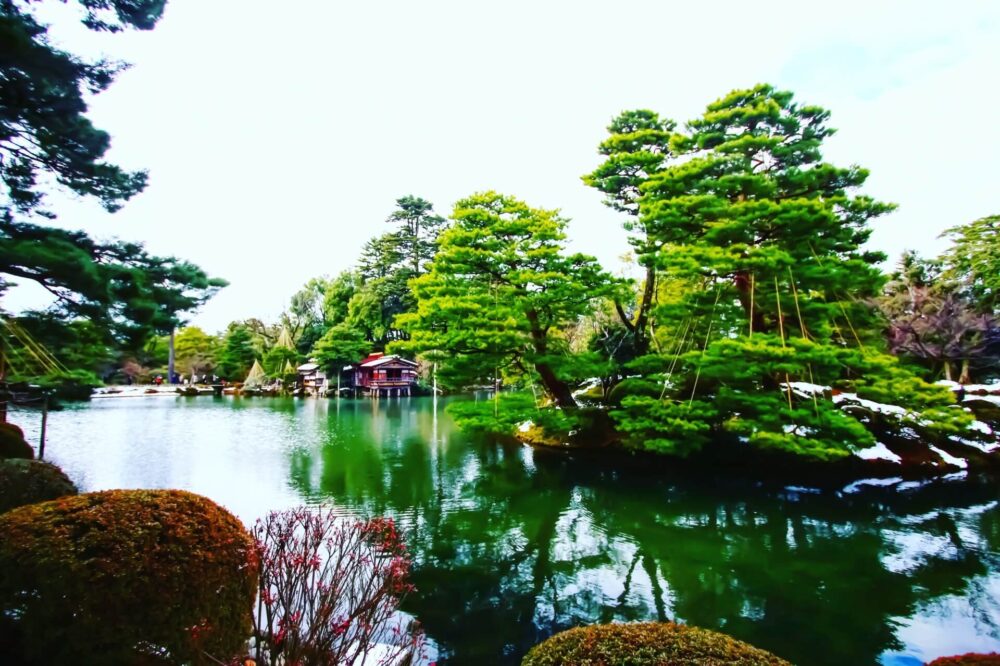
Located in Kanazawa City, Ishikawa Prefecture, Kenrokuen is a historically significant garden. It has become a popular tourist attraction, bustling with visitors throughout the year.
In this article, we introduce select highlights from the numerous attractions of Kenrokuen and explore the unique ways to enjoy the garden in each season.
Basic Information About Kenrokuen
Situated in the heart of Kanazawa City, Kenrokuen stands as a leading tourist spot in Ishikawa Prefecture and remains a picturesque garden cherished by the locals for a long time. Inside Kenrokuen, which boasts numerous attractions, it is highly recommended to leisurely stroll while admiring flowers that represent each season and listening to the chirping of birds. Amidst the lush nature, there are spots where one can touch upon history. The scenery dramatically changes with the seasons, making it irresistibly enticing to visit multiple times.
Highlights of Kenrokuen
Kenrokuen, with its captivating charm, houses many attractions, and here, we introduce some of the must-visit spots.
Kotoji Lantern
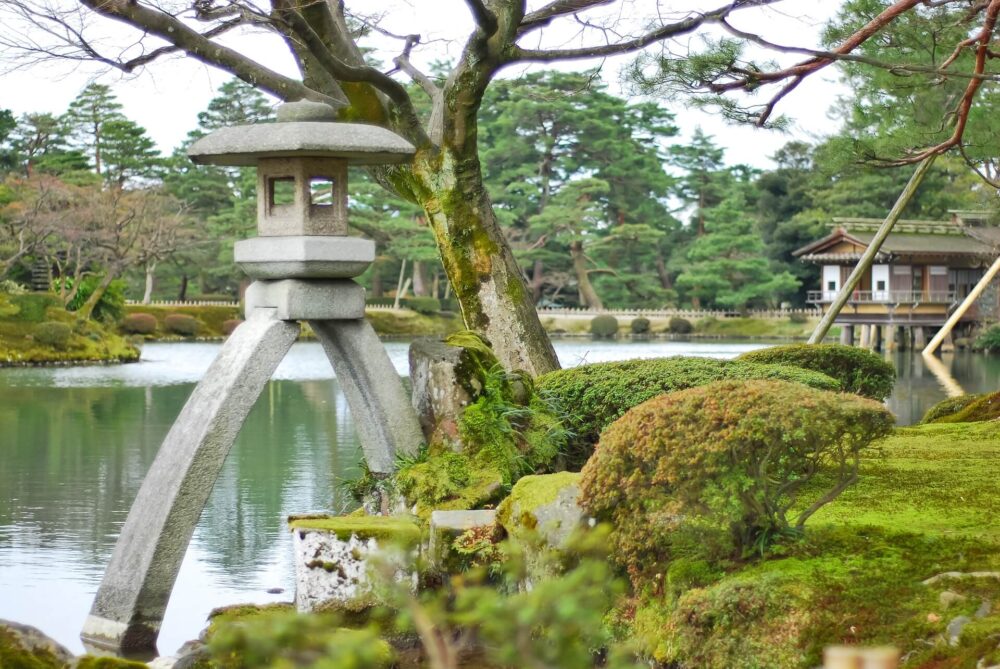
The iconic “Kotoji Lantern” of Kenrokuen stands on two legs, reaching a height of 2.67 meters. The curving silhouette of the “Rainbow Bridge” in the foreground resembles a koto (a traditional Japanese string instrument), and the Kotoji Lantern behind it is thought to represent the bridge that supports the strings of the koto. This is believed to be the origin of its name, “Kotoji”, meaning koto post. One leg of the “Kotoji Lantern” stands immersed in the “Kasumigaike Pond”, the largest pond in Kenrokuen, covering approximately 5,800 square meters. This pond hosts a variety of fish and birds, offering a serene view. Representing a quintessential landscape of Kenrokuen, the lantern is also a classic photo spot. Make sure to capture the moment.
Hanami Bridge
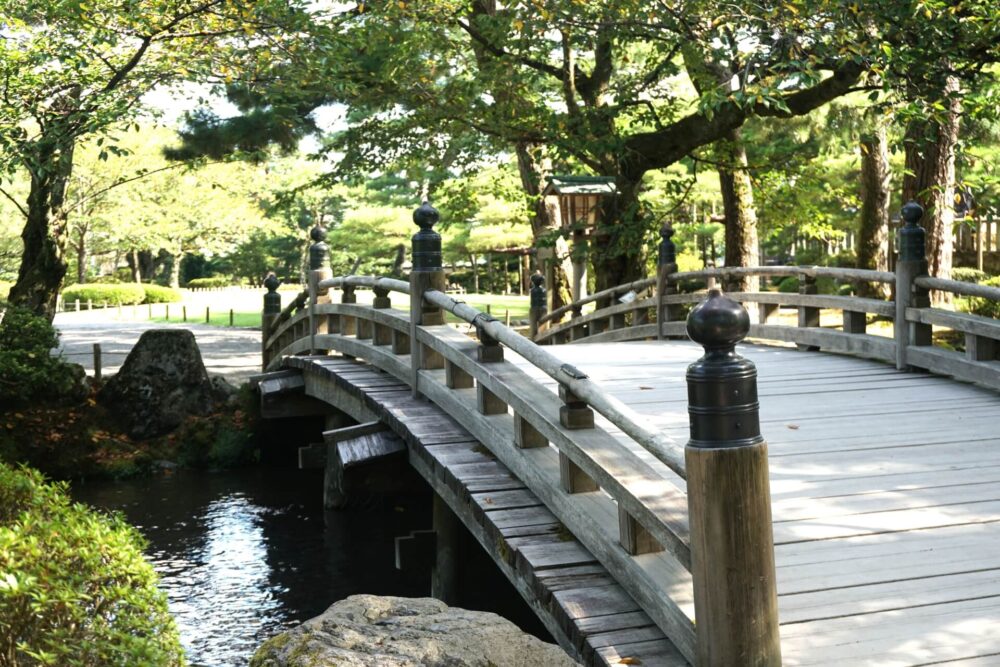
Named for the blossoms that can be enjoyed throughout the year, the “Hanami Bridge” attracts many seeking its soothing landscapes, making it one of the most popular attractions within Kenrokuen. At the base of this gently arching wooden bridge, flowers such as the famous iris of Kenrokuen, azaleas, and cherry blossoms bloom brilliantly against the calm flow of the water stream. Whether it’s the fresh greenery of spring, the autumnal colors, or the snowy vistas, every season offers a satisfying experience. It is a must-visit spot when touring Kenrokuen.
Fountain
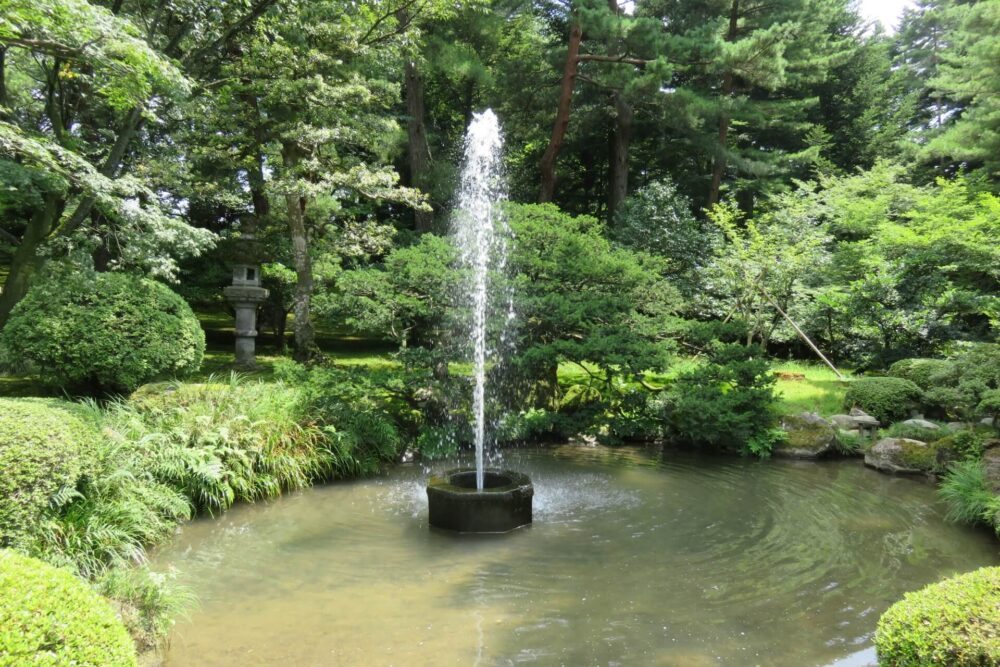
Using the “Kasumigaike Pond” as its water source, the fountain is unique as it sprays water purely by leveraging the natural water pressure from the elevation difference with its source, typically reaching heights of around 3.5 meters, although this varies based on the water level of the pond. Constructed during the final years of the domain’s rule in the Bunkyu era (1861) under the command of the 13th feudal lord, Nariyasu, it is said to be the oldest fountain in Japan. Initially, it was an experimental project to channel water to the Ninomaru area of Kanazawa Castle. Nariyasu is also known for his proactive efforts in expanding the “Kasumigaike Pond” and planting trees, thus contributing to the enhancement of the garden.
How to Enjoy Kenrokuen by Season
Kenrokuen, which presents a different face with each season, offers a diverse range of experiences, making it an attractive location to revisit. Let’s explore the seasonal charms, highlights, and ways to enjoy.
Spring: Enjoy Cherry Blossom Viewing
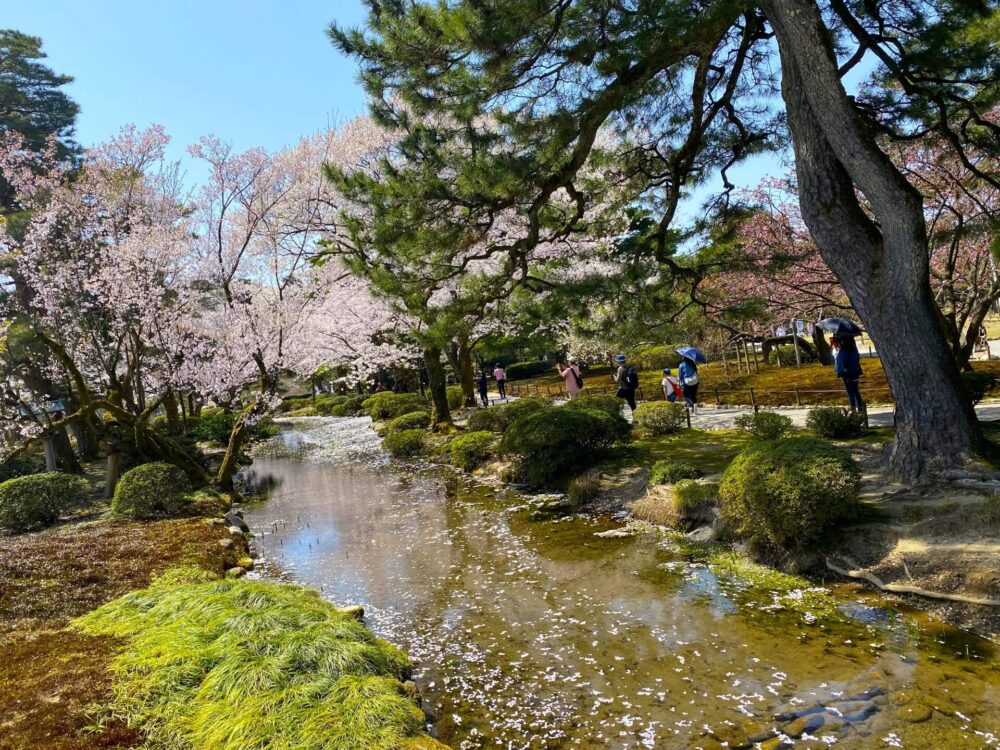
In spring, Kenrokuen is adorned with over 400 cherry trees. It’s a delight to see the diverse variety of around 40 species. During the peak of the cherry blossoms, there are light-up events, and Kenrokuen sometimes offers free entry.
Summer: Stroll Among the Plants and Waterside
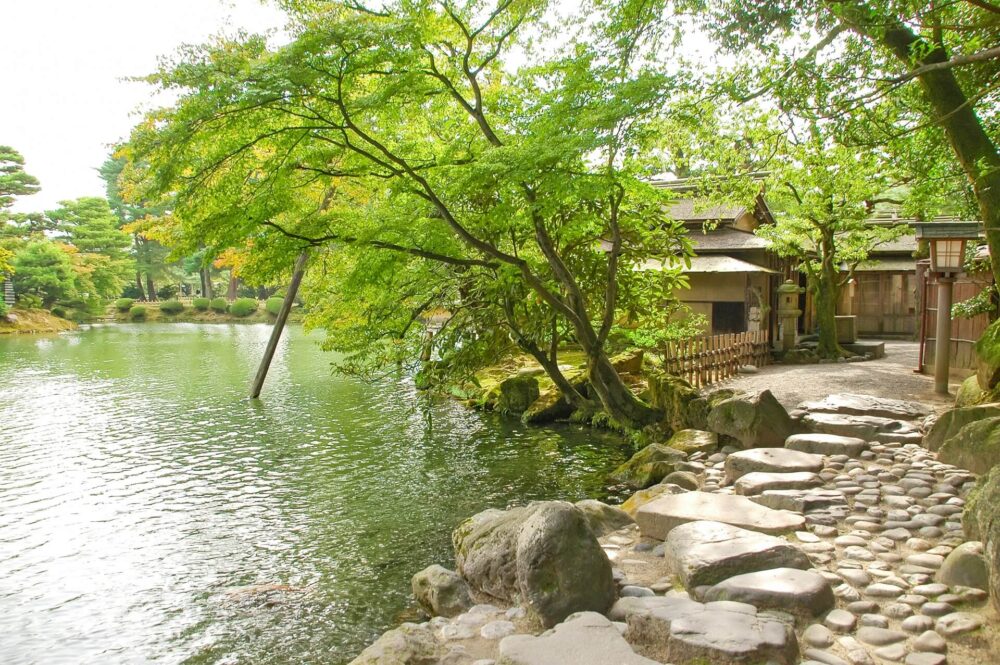
The radiant green of summer makes it a picturesque season in Kenrokuen. In early summer, noble purple irises, delicate azaleas, and bright rhododendrons bloom, creating a vivid contrast with the increasingly lush greenery.
Autumn: Visit to See the Reddened Autumn Leaves
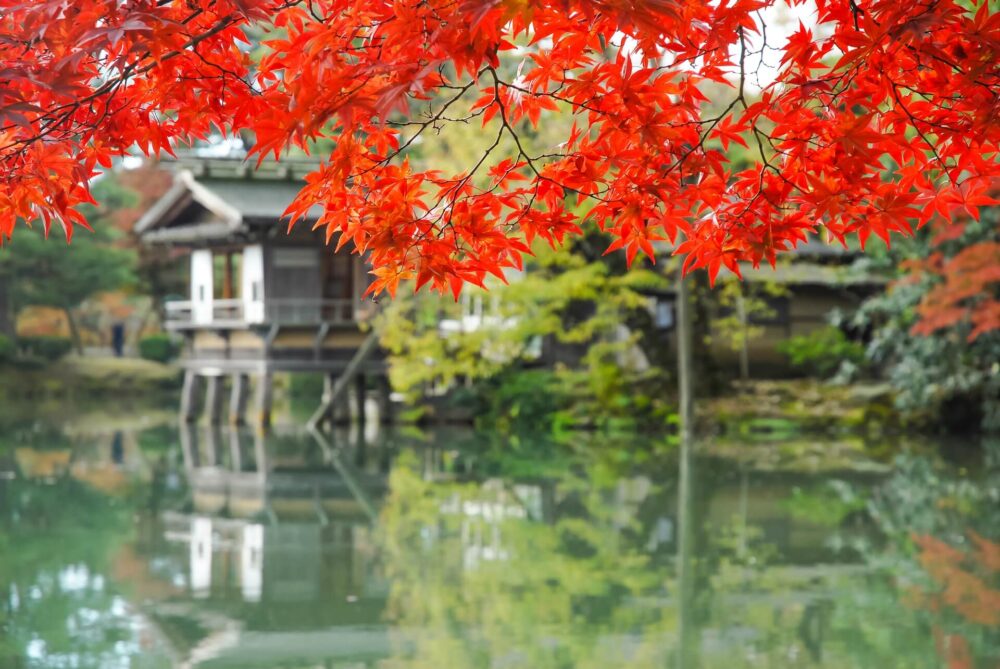
Starting around October, the autumn leaves of Kenrokuen begin to change colors, usually reaching their peak in November. Enjoy a leisurely stroll in the garden, which turns into a canvas of autumn hues.
Winter: Focus on Yuki-tsuri
In winter, under the clear skies and enveloped in pure white snow, one can witness Kenrokuen’s iconic “Yuki-tsuri”. Yuki-tsuri is a method of supporting tree branches with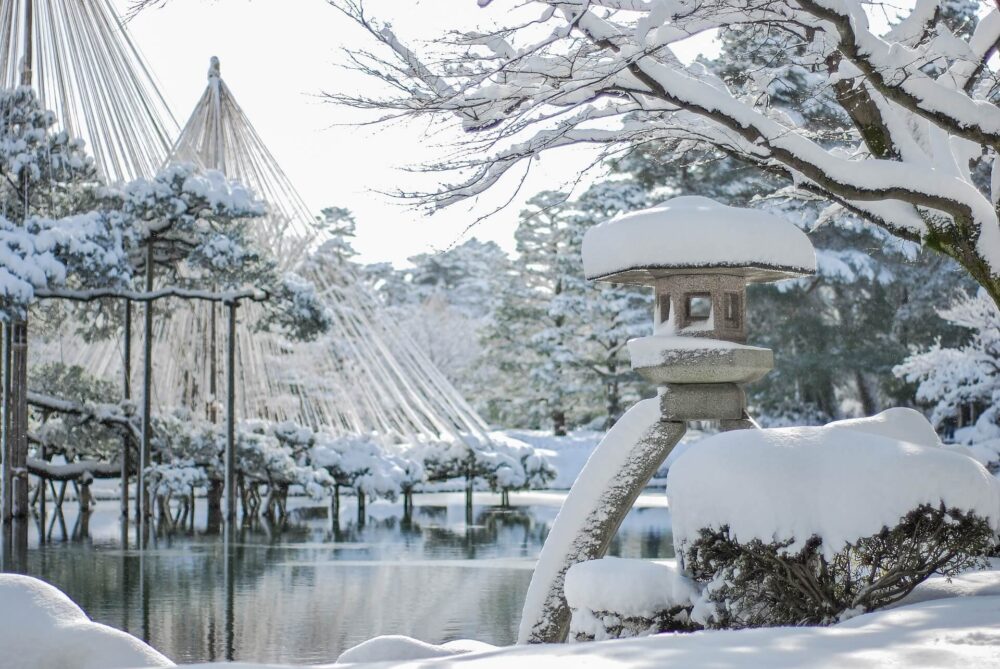 ropes radiating outward from a central pole made of wood or bamboo to prevent them from breaking under the weight of snow.
ropes radiating outward from a central pole made of wood or bamboo to prevent them from breaking under the weight of snow.
Access
For those using the train:
From the Tokyo area, you can access via the Hokuriku Shinkansen. From the Kansai area, take the Limited Express Thunderbird, and from the Tokai area, the Limited Express Shirasagi. If you’re heading to Kenrokuen Garden, please use JR Kanazawa Station. From Kanazawa Station, the “Kanazawa City Loop Bus” operates daily from the Kenrokuen Exit (formerly East Exit) bus terminal. For more details, please see the section below titled “For those using the bus.”
For those using the bus:
Kanazawa City Loop Bus
Operates every 15 minutes from stand no. 6 at the Kenrokuen Exit (formerly East Exit) of Kanazawa Station. The Kanazawa City Loop Bus has both a clockwise route and a counterclockwise route. Both stop at Kenrokuen Garden, but the clockwise route is faster and allows you to get off closer to the Kenrokuen side. If using the clockwise route, alight at “Kenrokuen-shita/Kanazawa Castle (opposite Ishikawa Gate)” stop no. 6, which is near the Katsurazaka entrance (ticketing area). If using the counterclockwise route, please alight at “Kenrokuen-shita/Kanazawa Castle (in front of Shiratori Road)” stop no. 9.
Fare (per ride): Adults: 200 yen, Children: 100 yen
Operating Hours: From 8:30 am to 6:05 pm, running at 15-minute intervals
*For more details, please check the external site link for the “Kanazawa City Loop Bus” provided by Hokuriku Railway Company.
Kenrokuen Garden Opening Hours
Kenrokuen Garden is open all year round, but please note that opening hours vary by season. An early morning free admission service is also available. If you’re an early bird, we encourage you to take advantage of it.
Regular (Paid):
March 1 – October 15: 7:00 am – 6:00 pm (Entry allowed up to 5:30 pm)
October 16 – End of February: 8:00 am – 5:00 pm (Entry allowed up to 4:30 pm)
Early Morning (Free):
March 1 – March 31: 5:00 am – up to 15 minutes before regular opening
April 1 – August 31: 4:00 am – up to 15 minutes before regular opening
September 1 – October 31: 5:00 am – up to 15 minutes before regular opening
November 1 – End of February: 6:00 am – up to 15 minutes before regular opening
*Please make sure to leave the garden by the closing time. Plan your visit with ample time.
*For the early morning free admission, please note that you must exit by 15 minutes before the regular (paid) opening time.
Admission Fee
Adults: 320 yen
Children: 100 yen
Related article
-

SIGHTSEEING
A Symphony of Seasons: Discovering the Serenity and Beauty of Ritsurin Garden in Takamatsu City, Kagawa Prefecture
2023.10.30
-

SIGHTSEEING
Kiyomizu-dera Temple: A Journey Through the Four Seasons of Kyoto’s Iconic Landmark
2023.11.07
-
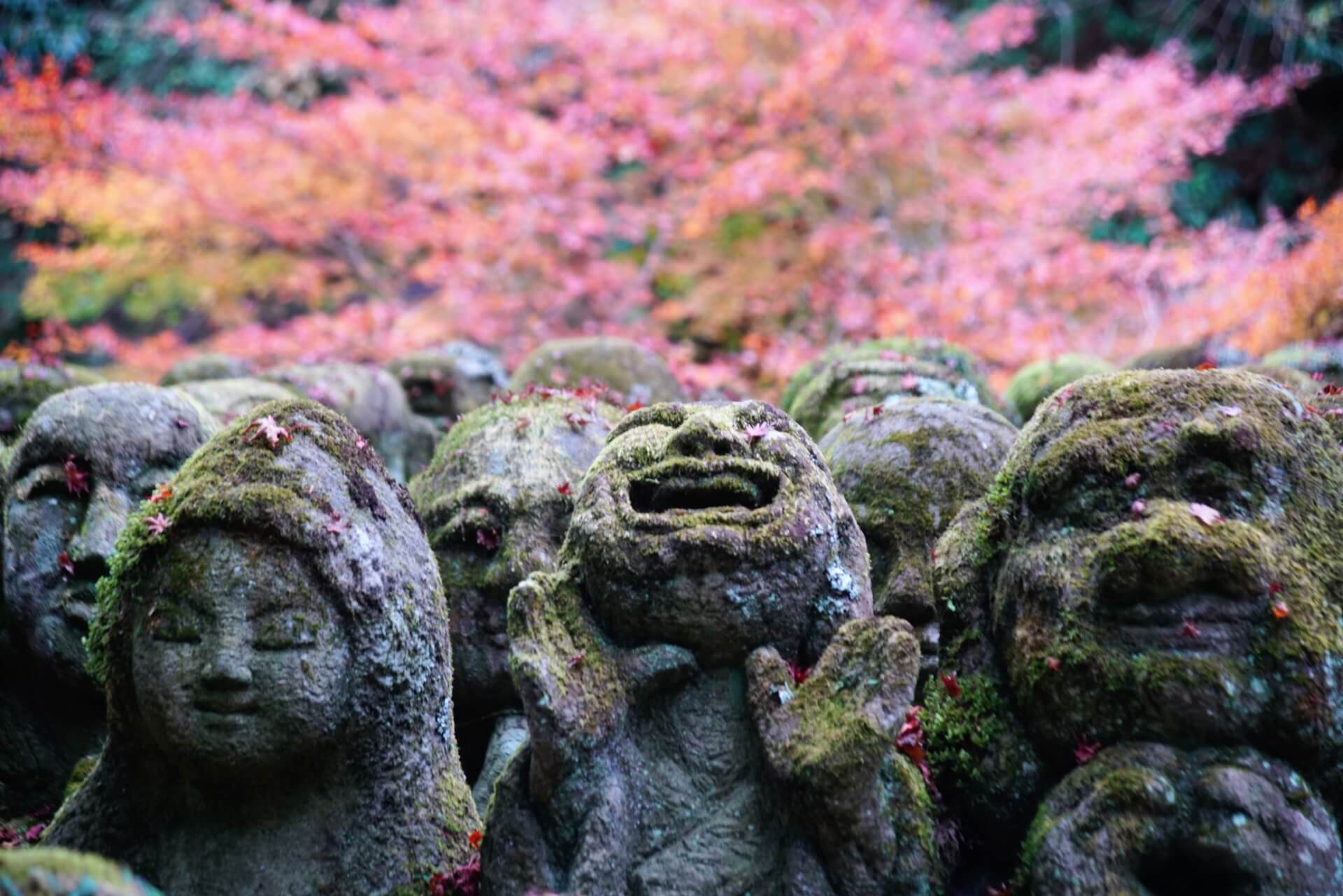
SIGHTSEEING
Exploring the Tranquil Otagi Nenbutsu-ji: A Hidden Gem in Kyoto’s Foothills
2023.10.23
-

SIGHTSEEING
Yutoku Inari Shrine: A Sacred Haven of Serenity and Tradition in Saga
2023.11.12
-
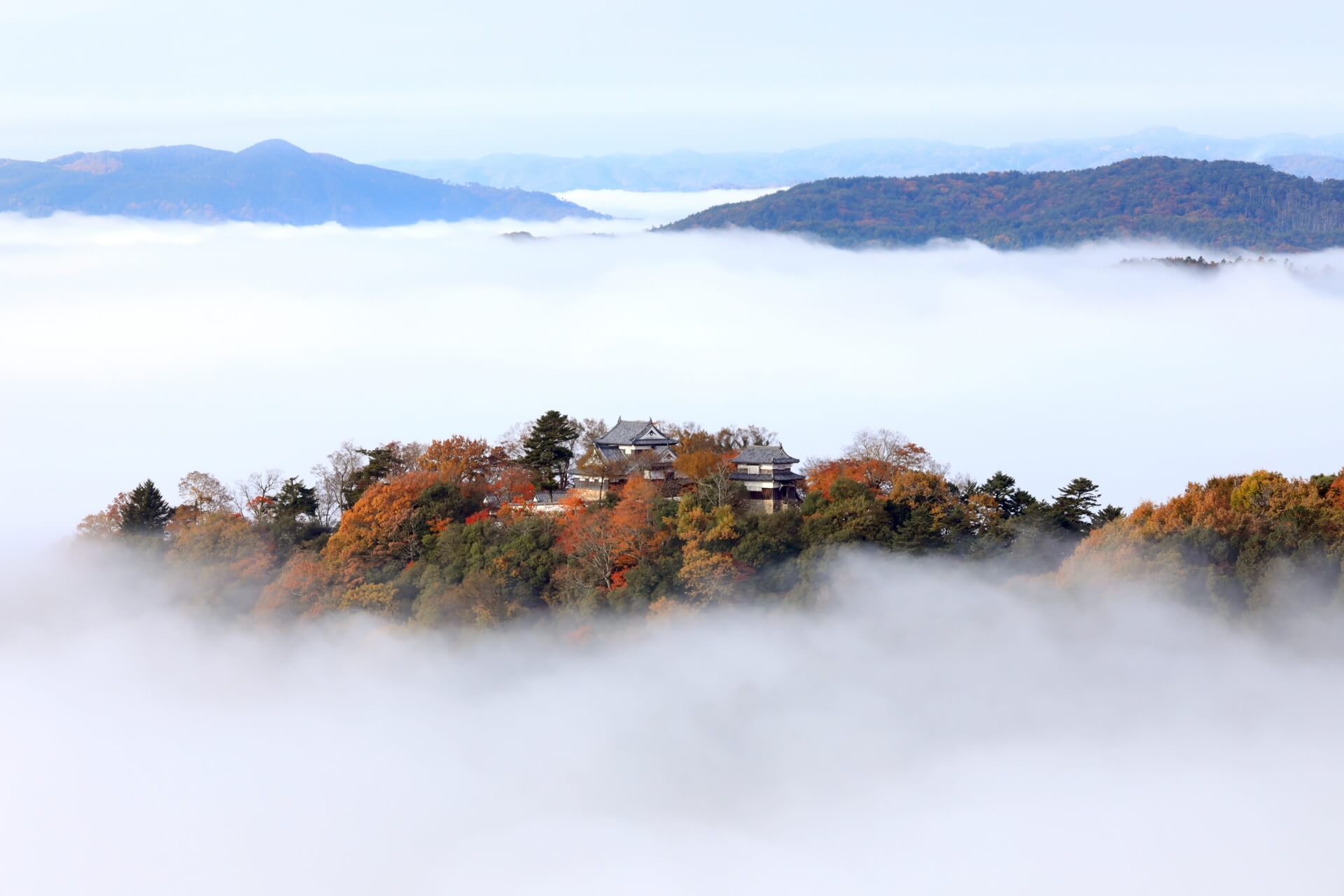
SIGHTSEEING
Unveiling the Majesty of Takeda Castle Ruins: A Guide to Japan’s Ethereal “Castle in the Sky”
2023.10.31




